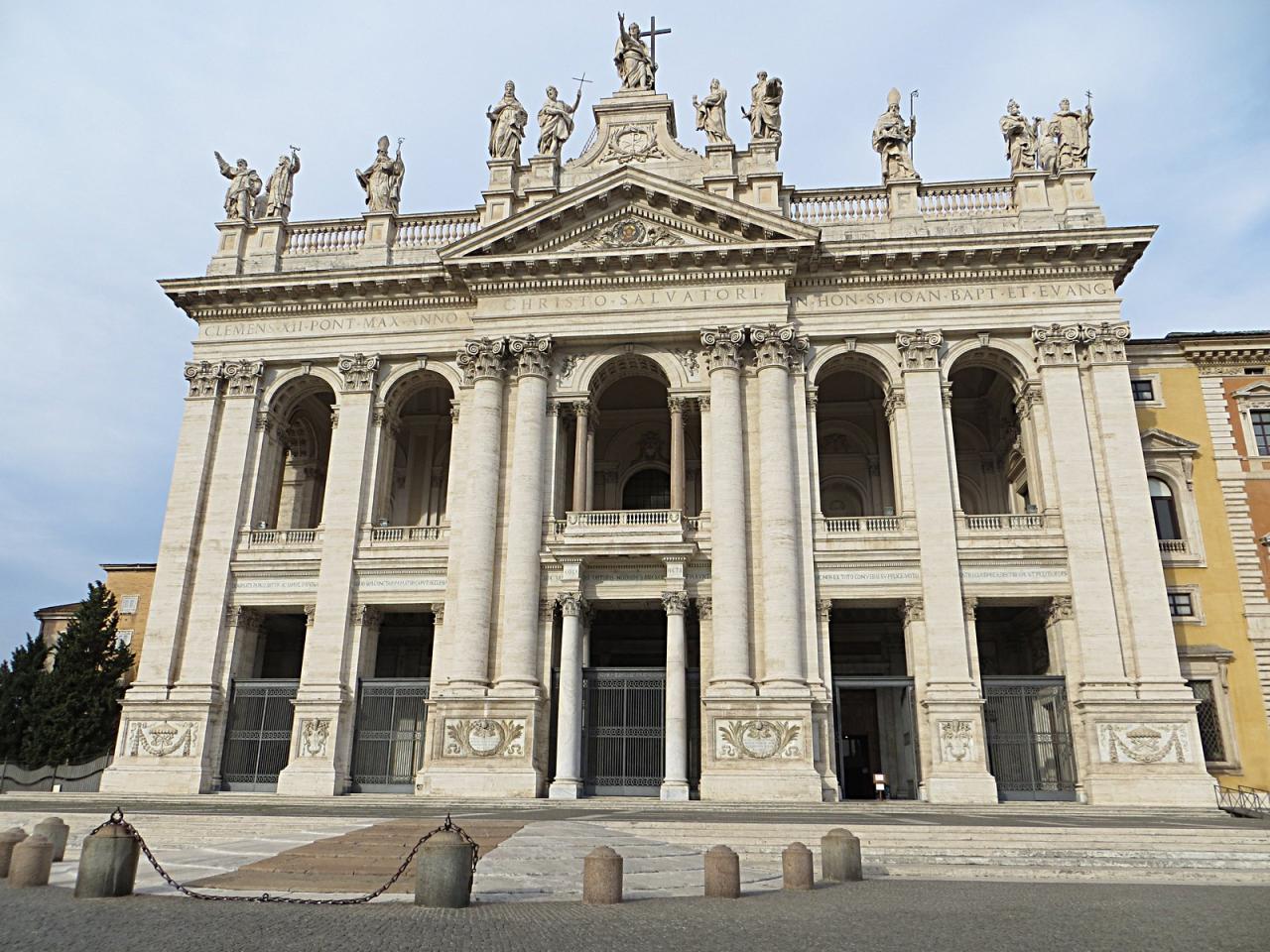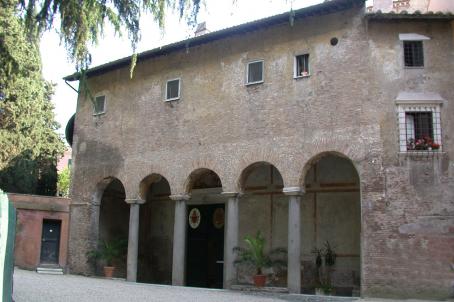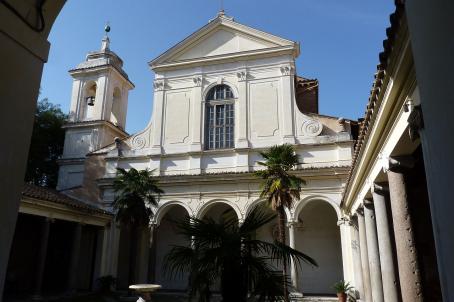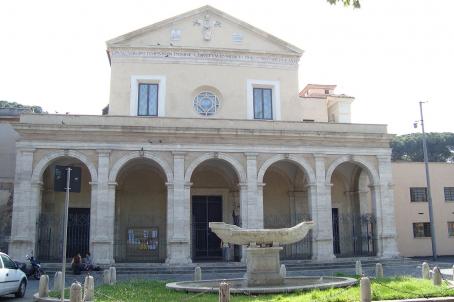Basilica of St. John Lateran
The Basilica of St. John Lateran or Cathedral of Rome is the most important of the four great papal basilicas and the oldest and most important basilica in the West. The basilica was founded in the 4th century by the Roman Laterani family. The basilica has been damaged many times by sackings (410, 455), earthquakes (896, 1349), fires (1306, 1361), but always restored. Although some parts of the building bear witness to the old basilica, such as the magnificent Romanesque cloister and the ceiling, most of the present building is the result of a major remodelling in the 17th century. The nave and the interior design are the work of the architect Francesco Borromini. The monumental exterior façade was built in travertine in 1734 by the architect Alessandro Galilei. He was clearly inspired by the façade of St. Peter's in Rome.






